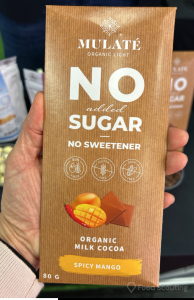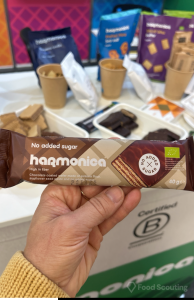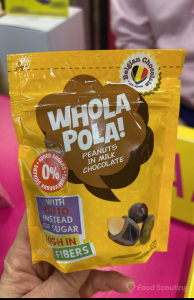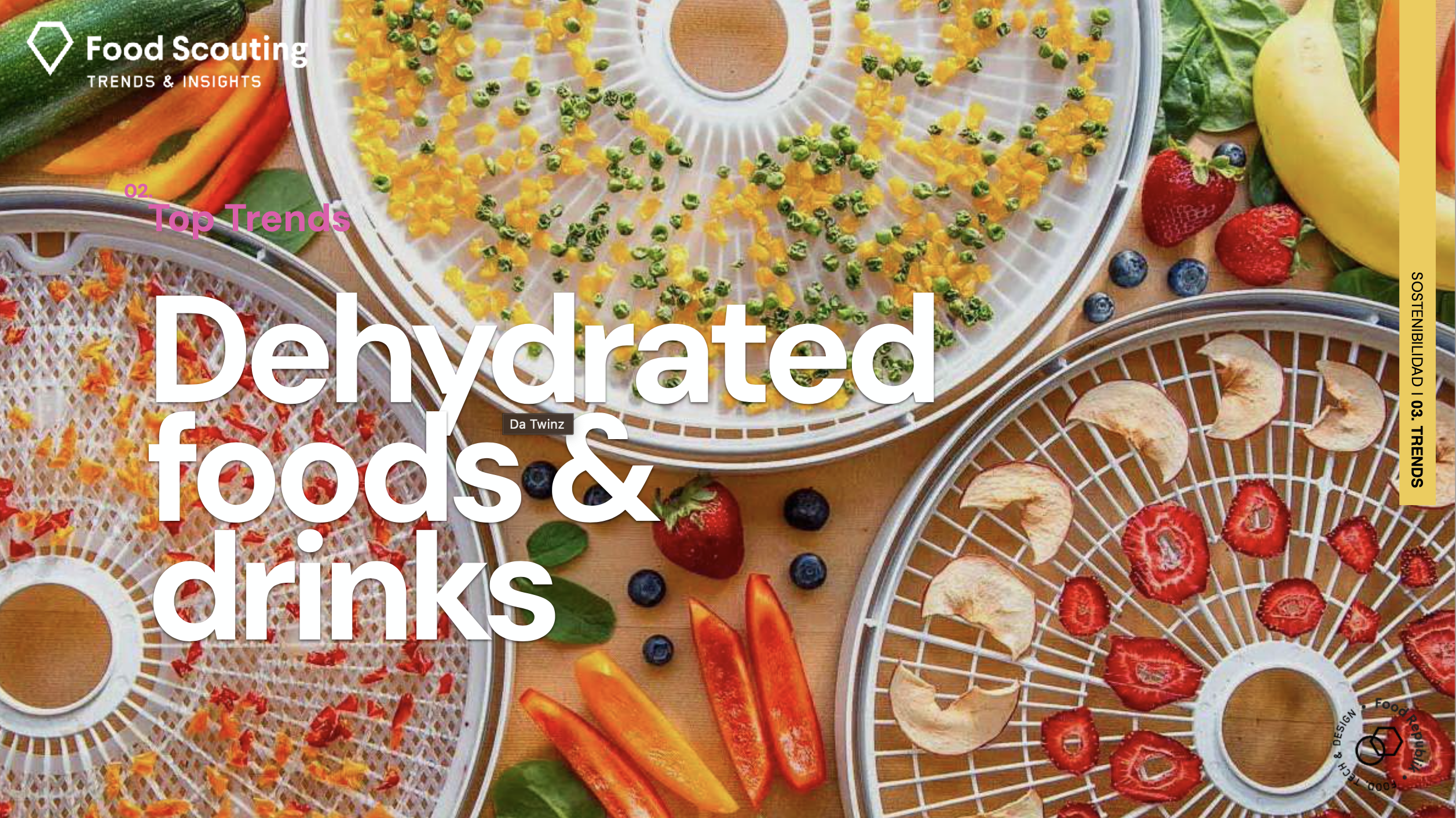Sugar reduction trend【Innovation without loss of quality】

Trends in sugar reduction: how to innovate without losing the consumer
Sugar reduction is no longer just a regulatory and health necessity, but a response to changing consumer expectations. This article delves into how the food industry is adapting to this demand, without sacrificing the sensory experience. Through technological innovations and the use of new ingredients, brands are managing to maintain taste and texture, without resorting to traditional sugar or regular sweeteners.
Why has sugar reduction become a global priority?
Sugar reduction is now a global challenge, driven by public health, regulations and increasing consumer demands. Manufacturers must find solutions that are not only technologically viable, but also offer products that connect emotionally with consumers, who are looking for healthier, less processed options.
Public health, regulation and consumer pressure
The World Health Organization (WHO) and governments around the world have identified excess sugar as a key factor in the rise of non-communicable diseases such as obesity and type 2 diabetes. Front-end labeling and regulations on the amount of sugar in processed products are forcing the industry to look for healthier alternatives. These changes are not only in response to health concerns, but also to an increased demand for transparency in nutritional information.
The rise of the conscious consumer: natural, functional and guilt free
Modern consumers are increasingly conscious of what they consume. They are looking for products with an improved nutritional profile, offering additional benefits such as fiber or protein, while at the same time not sacrificing taste. The trend is toward more natural products, with less processed sweetness and options that are not only low in sugar, but also offer other functional benefits.
Less sugar, less pleasure? The great sensory challenge of the industry.
The main challenge in reducing sugar is to ensure that the product remains enjoyable. Flavor is a critical factor in the success of any food product, and sugar reduction must not compromise the sensory experience. Texture, aroma and mouthfeel must be kept in balance so that consumers do not perceive that they are sacrificing pleasure for health.
Trend-setting strategies to reduce sugar without losing flavor
There are multiple strategies the industry is adopting to reduce sugar without compromising product quality. From natural sweeteners to reformulation technologies, brands are innovating creatively to meet consumer expectations without losing taste.
Known sweeteners: stevia, erythritol, maltitol and sucralose
Stevia, erythritol, maltitol and sucralose are some of the sweeteners most widely used by the industry to reduce sugar in processed products, especially compared to options such as aspartame, which have a more limited acceptance due to their image.
These sweeteners have particular characteristics that make them preferable in certain products. For example, stevia is considered a more natural option, while erythritol and maltitol offer a sensory profile closer to sugar, although they can sometimes leave an aftertaste that some consumers do not appreciate. The key is to combine them appropriately with other ingredients to achieve a sensory balance that maintains the consumption experience without compromising health.
Vegetable fibers with natural sweetness: inulin, agave and more
Vegetable fibers such as inulin and fructo-oligosaccharides (FOS) not only help reduce sugar, but also improve the nutritional profile of the product. These fibers provide natural sweetness, which reduces added sugar and increases fiber content, especially relevant for “functional” or “clean label” products.
In addition, both inulin and FOS act as prebiotics, promoting the growth of beneficial bacteria in the gut, which contributes to digestive health. This benefit can be included as a prebiotic claim on labels, as long as the appropriate labeling regulations are met. However, the sweetening power of these fibers is lower than that of other substitutes, so they are often combined with higher intensity sweeteners.
Progressive reformulation: training the palate with less sweetness
One of the most effective strategies for reducing sugar is to do so gradually. This allows consumers to adapt to a less sweet taste without the transition being noticeable. Progressive reformulation also helps to create products that respect consumer habits and promote sustainable behavior change. Examples of this strategy include brands that have gradually reduced the amount of sugar in their products over several years, achieving a balanced taste without causing consumer rejection.
Sensory design: perception of sweetness without increasing doses
Technology and sensory science have come a long way in recent years. Techniques such as modifying the particle size of sugar or its distribution within the product make it possible to optimize the perception of sweetness, using less actual sugar. This helps to maintain the sweet taste with a reduced amount of sugar, maximizing the sensory experience and improving consumer acceptance of the product.
New ingredients that are revolutionizing sweetness
The future of sugar reduction is not just in traditional sweeteners. New research is yielding innovative ingredients that promise to change the way we think about sweetness in foods.
Sweet proteins such as brazzein: the future without calories
Sweet proteins, such as brazzein, are emerging as a natural alternative to sugar. Sourced from plants and produced through fermentation, these proteins have the ability to offer sweetness without adding calories. Although their use is still under development, they are expected to have great potential to revolutionize the food and beverage industry in the coming years.
Precision fermentation for functional sweeteners
Precision fermentation is enabling the creation of natural sweeteners with precise control over taste, stability and purity. This process can produce sweeteners with specific sensory characteristics, opening the door to new formulations that are more in line with consumer expectations.
Emerging fruit syrups, polyols and clean label solutions
Fruit syrups and polyols are becoming popular alternatives within clean label solutions. These natural alternatives are well accepted by consumers, as they come from natural sources and can be used in a wide variety of products. They also offer a good option for those looking for products without artificial additives.
What are consumers really looking for in sugar-free products?
To succeed in today’s market, brands must understand what consumers are really looking for in sugar-free products. Sugar reduction is only part of the equation; the balance between taste, functionality and transparency is crucial.
Balanced sweetness, no aftertaste and nutritional benefits
The modern consumer is looking for a balanced sweetness, which does not leave unpleasant aftertaste. They also value additional benefits, such as fiber or protein, that enhance the nutritional profile of the product. The trend is to find that perfect balance between indulgence and health.
Transparency, clean labels and clear messages
Transparency is key for today’s consumers. They look for products with clean labels, free of artificial additives and hidden ingredients. They also expect clear messages that communicate honestly what they are consuming.
Indulgent products for everyday use: pleasure without guilt
Consumers do not want “diet” products that make them feel they are sacrificing pleasure. They are looking for indulgent products that allow them to enjoy without guilt, with a sugar reduction that does not affect the consumption experience.
Brands that are leading the way in sugar-free innovation
There are brands that are at the forefront of innovation in sugar reduction, creating products that are not only healthy, but also delicious and appealing to consumers.
MULATÉ: chocolates with no added sweeteners, fruit and inulin
Mulaté has managed to combine the natural flavor of the fruit with inulin fiber to create cocoa tablets with no added sweeteners, offering a functional product adapted to current trends in sugar reduction.
HARMONICA: bars with agave fiber and authentic flavor
Harmonica bars use agave fiber to sweeten naturally, with no added sweeteners. They are also rich in fiber and are made with ingredients from organic farming, offering a less processed alternative to the average of similar products in their category.
WHOLA POLA: snacks that combine fiber, sweetness and functionality
Whola Pola offers a line of snacks sweetened with Zùsto, a blend of maltitol, fiber and sucralose. These products offer an effective alternative to sugar, without compromising the indulgent experience and aligned with the needs of people who need or want to reduce their sugar intake.
Opportunities for the food industry
Sugar reduction opens up numerous opportunities for innovation. Brands can explore new formulations that connect with current consumer expectations, without sacrificing taste or functionality.
√ Reformulate classics without intense sweeteners.
Brands can innovate by reformulating traditional products such as cookies, cereals and yogurts, without resorting to artificial sweeteners. This is an excellent opportunity to update popular products without losing taste and positioning.
√ Digestive and satiating functionality: the new competitive advantage.
Fiber not only contributes to reducing sugar content, but also promotes intestinal transit, prolongs the feeling of satiety and, in many cases, acts as a prebiotic, feeding beneficial microbiota. These benefits are particularly attractive to those who prioritize healthy and functional foods in their daily diet.
√ Segment by lifestyle: keto, infant, diabetic, athletic
Developing products adapted to specific lifestyles – such as those who follow keto diets, seek to control their sugar intake or maintain an active lifestyle – allows us to connect with real needs and differentiate ourselves in an increasingly demanding market. This orientation makes it easier to create functional proposals that are more relevant to audiences such as athletes, people who need to control their sugar intake or consumers with conscious eating habits.
This information is part of the ISM Innovation Update 2025 report.
If you want to learn more about this topic or other innovation categories, please contact us! If you have an innovation challenge, we have cases and information that will help you make strategic decisions.






